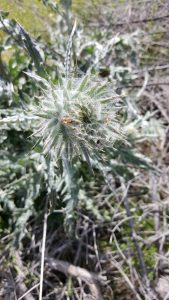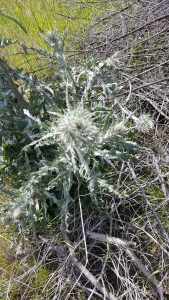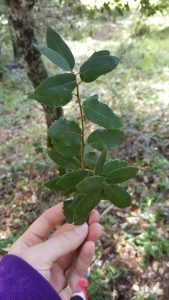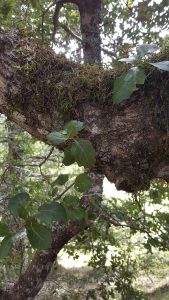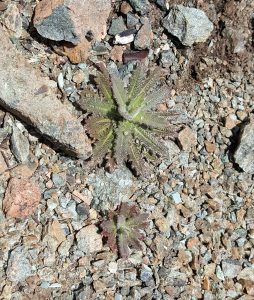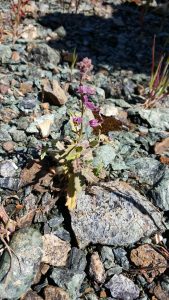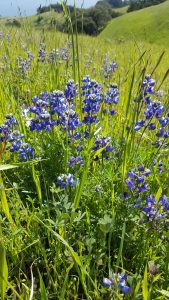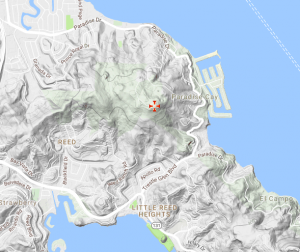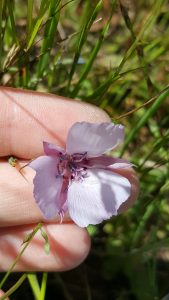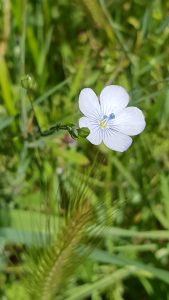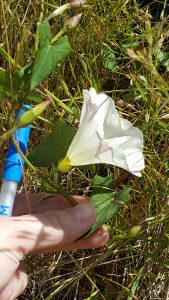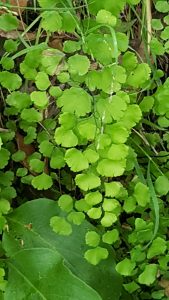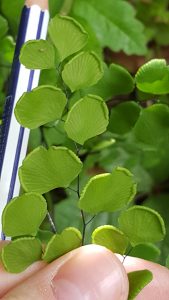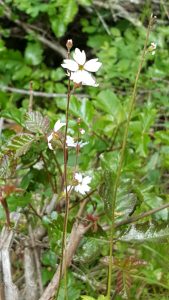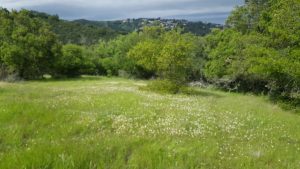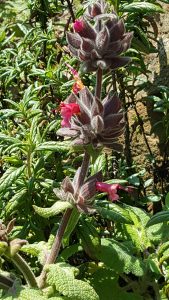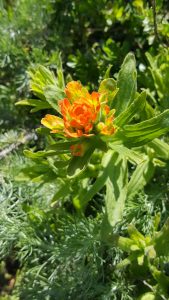Mount Tamalpais (Serpentine Sites): 37.88908, -122.61086
We returned to Mount Tamalpais, but this time we visited some areas near the middle peak. These areas were challenging to classify, as they were dominated by many different plant species. In general, the serpentine outcrops were dominated by small plants such as chamise and Mt. Tamalpais manzanita. I would classify the other areas as chaparral, as they were dominated by oak species and some conifer species.
Cirsium occidentale (Western thistle)
C. occidentale is a California perennial herb in the family Asteraceae. It is native and endemic to California. It tends to have erect stems with distal branches. Its leaves are gray-green to white-tomentose. They are more or less glabrous with spiny petioles and oblanceolate blades. The leaves also have triangular lobes with spines from 1 to 10 millimeters long. The inflorescence of C. occidentale consists of one to several heads in a loose to tight cluster. The cluster is ovoid to spheric, and can be straight, twisted, or bent. The heads can come together in an appressed to widely radiating pattern. They are sometimes connected by a network of hairs resembling spiderwebs (as observed in this individual). We did not observe any flowers, but when they are present, they are white to lavender, purple, or red with a corolla from 18-35 millimeters wide. In addition, we did not observe any fruit, but when it is present, it is about 5 millimeters in size with a pappus from 15-30 millimeters long.This individual was found near a moist gully on the side of the road on Mount Tamalpais.
Quercus parvula spp. tamalpaisensis (Tamalpais oak)
Q. parvula is a native tree species in the family Fagaceae. We observed the subspecies Q. parvula spp. tamalpaisensis (the Tamalpais oak). This evergreen subspecies grows from 1 to 6 meters tall. Its leaves are 8 to 14 centimeters long, with long, dentate margins. The leaves were also dark green and glabrous, with a roughly tapering shape. On this individual, some leaves had dentation and others were entire. We did not observe any fruits, but when it is present in the form of nuts. These nuts are 30 to 45 millimeters in length, with a bowl shaped cup. The nuts are also barrel-shaped to ovoid, tapered, and mature during the second year of growth. It grows in understory conifer woodland, up to 750 meters in elevation. This taxon is considered to be rare or endangered. This individual was found on a slight slope on the side of a trail.
Streptanthus glandulosus spp. pulchellus (Mt. Tamalpais bristly jewel flower)
S. glandulosus is an annual in the Brassicaceae family. It is native and endemic to California. It has a simple, glabrous stem that is branched throughout its length. The leaves are basal and petioled. They are also coarsely dentate to lobed and sessile. The leaves tend to be lanceolate-linear to oblanceolate in shape. This species also exhibits open inflorescence. The flowers consist of a bilateral calyx and sepals 5 to 10 millimeters in length. These sepals can vary greatly in color, from white to yellow, rose, purple, or purple-black. They are also glabrous or have sparse bristles. The petals are 7 to 17 millimeters in length. In addition, the flowers have filaments in three pairs of unequal length. We did not observe any fruit, but when it is present, it is ascending to spreading or reflexed and is 3 to 11 centimeters long. It is either straight or curved, and can be glabrous to moderately pubescent. There are 22 to 70 ovate to oblong seeds per plant. This species is notable because seven out of its eight subspecies are found in California. More specifically, Streptanthus glandulosus spp. pulchellus is a rare or endangered taxon, and is occasionally found on serpentine. Its stems and leaves are bristly and its flowers are rose to lavender to purple. The individual we saw was about 15 centimeters tall, with purple flowers. It was found on the edge of a serpentine outcrop in full sun.
The views at the end of the trip were incredible–maybe even the best I’ve seen all semester! I am very thankful to get off campus and appreciate the rich botanical diversity of the Bay Area.

